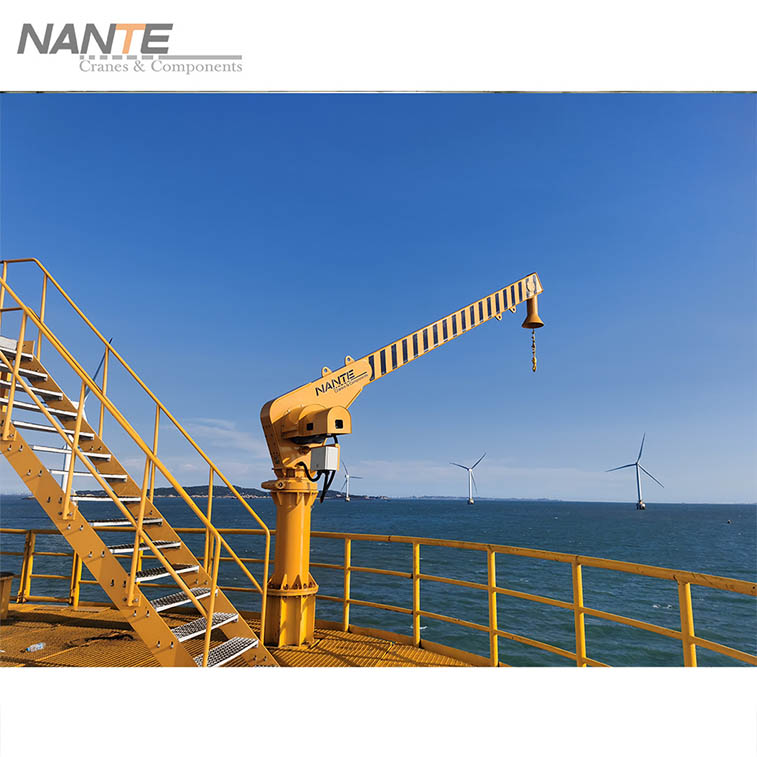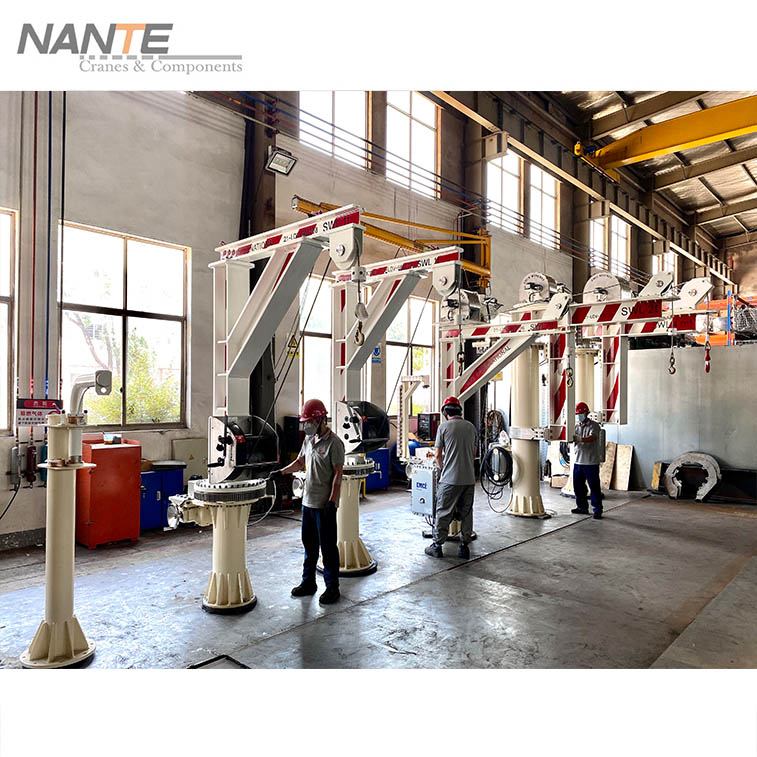What Is an Offshore Crane?
Date: 2024-02-11 Share:
This is a kind of lifting equipment to carry out operations at sea, which is widely used in the fields of marine engineering, offshore oil exploration, sea rescue, and sea cargo transportation. Offshore cranes are usually installed on ships, offshore platforms or other offshore structures, with strong lifting capacity and stability, able to carry out efficient and safe operations in the harsh marine environment.
In the design and operation of offshore cranes, it is necessary to fully consider the complexity of the marine environment, such as wind and waves, sea currents, seawater corrosion and other factors to ensure the structural strength, stability and reliability of the crane. In addition, offshore cranes also need to have a high level of automation and intelligence to improve operational efficiency and safety.

Types of Offshore Crane
Offshore cranes can be categorized into various types according to their structure and usage, including ship cranes, floating cranes, mast cranes and so on. Different types of offshore cranes have their own advantages and disadvantages.
Marine Crane
Marine crane, mainly used for cargo transfer between ships, sea supply, underwater operation equipment placement and recovery. It has the advantages of high loading and unloading efficiency, easy operation, small occupation of deck area, etc. It is especially suitable for lifting and loading of heavy cargo. However, the self-importance, large volume and high center of gravity of marine cranes have a certain impact on the stability of the ship, and the ship’s power station and overhaul technology requirements are high, the price is also relatively high.
Floating Crane
A floating crane is a commonly used offshore crane, consisting of one or more pontoons, which can be easily moved at sea. Its main advantage is its mobility, which makes it suitable for offshore construction, building, demolition and other tasks. In addition, the floating crane can be installed with different types of lifting equipment as needed, such as cradles, bucket cranes, lifting hooks, etc., which makes it highly applicable. However, its stability may be affected by the offshore environment.
Mast Crane
A mast crane is a kind of lifting equipment based on the mast, which is mainly characterized by a simple structure, easy to use and suitable for simple lifting operations. It is usually installed on small vessels with small lifting weight limitations and a relatively narrow scope of application.
In addition, offshore cranes can also be divided into electric cranes and hydraulically driven cranes according to the driving method. Electric cranes have the advantages of high efficiency, correct speed, easy operation, less maintenance and easy remote control. Hydraulically driven cranes are characterized by stable operation, light quality, small size, step-less speed regulation, constant power, high speed with empty hooks and slow speed with light loads.

Choosing Offshore Crane
The choice of offshore crane types needs to consider a variety of factors, including lifting needs, working environment, equipment characteristics, safety requirements and economic factors.
The first point is the lifting requirements. You should need to identify the specific needs of the offshore lifting operation, including the weight, size and shape of the cargo to be lifted. This will determine the lifting capacity and working range of the crane required.
The second point is the working environment. The offshore working environment is complex and variable, including wind and waves, sea currents, seawater corrosion and other factors. Therefore, when choosing an offshore crane, you need to consider its stability and adaptability. For example, floating cranes are suitable for operational scenarios that require frequent movement, while marine cranes are suitable for cargo transfer between ships.
The third point is equipment characteristics. Different types of offshore cranes have different characteristics. For example, electric cranes have the advantages of high efficiency, correct speed change, easy operation, etc., which is suitable for scenes that require high operational efficiency. The hydraulic drive crane has stable operation, step-less speed regulation and other characteristics, suitable for the operation of high precision requirements of the scene.
The fourth point is the safety requirements. Offshore lifting operations have very high safety requirements. Therefore, when choosing an offshore crane, you need to consider its safety performance and reliability. For example, the crane’s structural strength, stability, braking system and safety guards need to meet the relevant standards and requirements.
The fifth point is the economic factor. Economic factors are also one of the important factors to consider when choosing an offshore crane. Including crane acquisition costs, maintenance costs, operating costs and service life. Need to be based on the actual needs and budget for comprehensive consideration, and the most cost-effective offshore crane.
In summary, the selection of offshore crane types needs to consider a variety of factors, including lifting needs, working environment, equipment characteristics, safety requirements and economic factors. Through comprehensive evaluation and analysis, you can choose the type of offshore crane that best suits your actual needs to improve operational efficiency and safety.
 English
English






